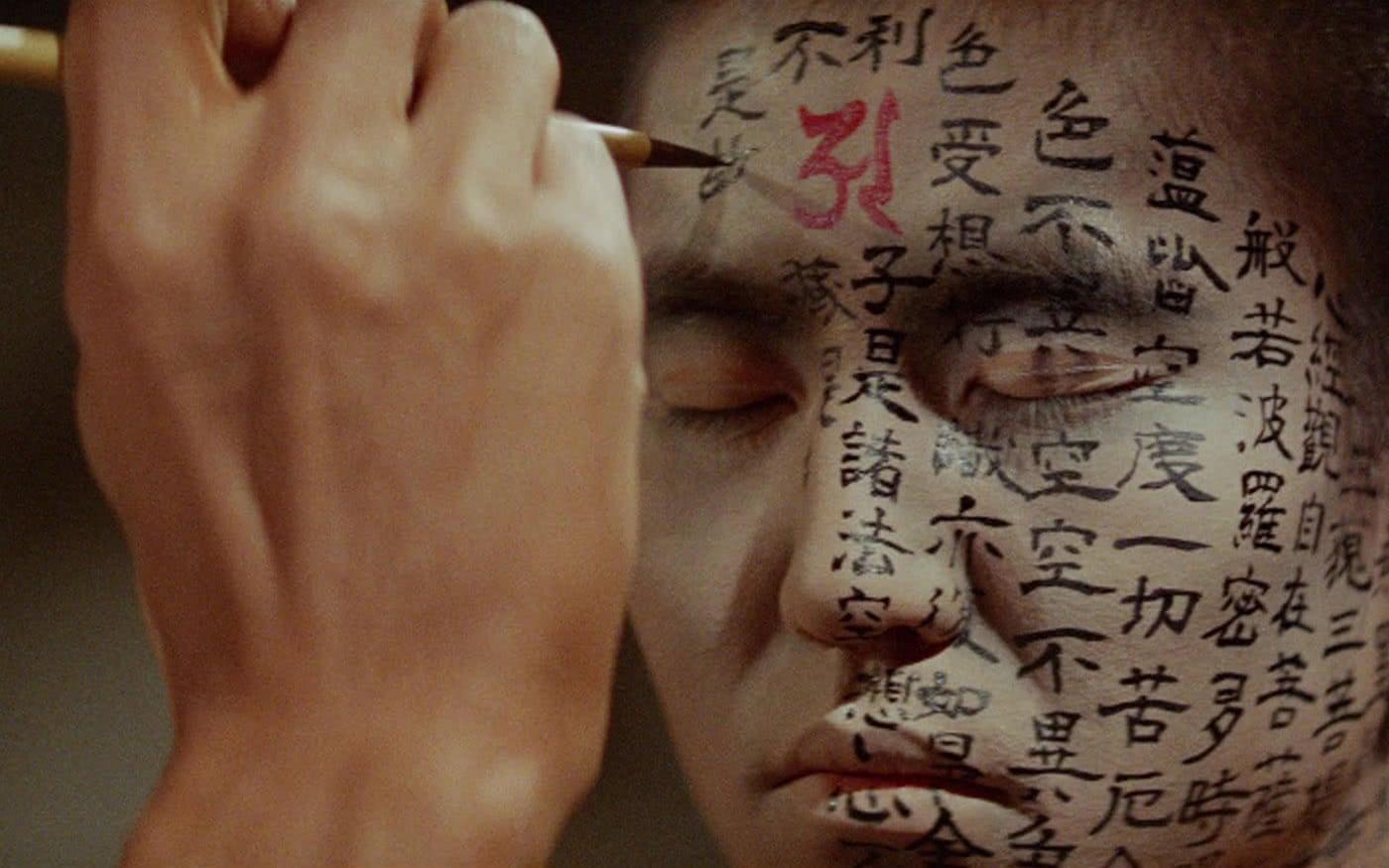Kwaidan by Masaki Kobayashi (Review)

Kwaidan is actually 4 short movies in one, each one telling a ghost story. I’ll start off this review by saying that if you watch this movie for great storytelling, you might be disappointed. If you ever read ghost stories as a kid, or watched shows like “The Twilight Zone,” you probably came across stories similar to these at one time or another.
The first story is “The Black Hair.” A samurai, tired of his squalid lifestyle, leaves his loving wife for a better position. He marries into a wealthy family, but is racked with guilt for what he did to his first wife. After becoming prosperous, he returns to reclaim his wife. Unfortunately, he does not find what he’s looking for and ends up with the last thing he ever wanted.
The second story is “The Woman in the Snow.” A young woodcutter and his master are caught in a terrible blizzard. After finding shelter, the young man awakes to discover a woman stealing the life from his master. Just as it looks like he will face a similar fate, the woman disappears with the warning that if he tells anyone what has transpired, she will kill him. Time passes, and he meets a woman while coming home one day. They fall in love, get married, and have kids. Until one day, when the woodcutter forgets the warning.
The third story, “Hoichi the Earless,” is about a blind man who is asked by restless spirits to play for them. Hoichi is a talented musician and does as they ask, but it begins to take a toll on him. The priests at the monastery where he is living attempt to protect him, and do so, but with unexpected results.
The final story, “In a Cup of Tea,” is actually a story within a story, and has a very intriguing premise: What if you accidentally obtained another person’s soul?
Of the 4 stories, I found the last 2 the most stimulating and interesting, but for different reasons. The plot of “Hoichi the Earless” may not be the most original, but the story is told well, with a fascinating historical angle, and also contains one of the most riveting scenes of the entire series. “In a Cup of Tea” has a very interesting premise, and is quite disturbing at times. Not because it delivers, but because it doesn’t. At least, not in the way you feel it should. The film ends abruptly, denying you closure and any clue as to why it ended that way. But it allows you to figure in your own ideas, and the final image is quite haunting.
However, there is one thing that all 4 films share. All 4 have some of the most beautiful cinematography, use of color, and camera movement of any movie I’ve seen. Everything about this film, especially the use of lighting and shadows, as well as the elaborate backdrops, add a very theatrical element to the piece. The camerawork is often graceful, moving and unfolding in a very meditative way that is often maddening, but almost always rewarding. Every visual element, from the colors chosen to the actor’s movements to the scenery, adds to the dreamlike, spiritual feel of this film. There’s a scene in “Hoichi The Earless” when Hoichi crosses over into the spirit world. Combining subtle elements like fog, the colors of the actors’ clothing and their movements, and the glacial motion of the camera, the effect is quite otherwordly.
I won’t lie to you. I found this film very hard to sit through. At times, the plots of the films promise a lot, but don’t deliver. Like I said earlier, if you ever watched The Twilight Zone and read ghost stories when you were a kid, you can see the plot twists and conclusions coming from a mile away. This film demands patience, and it’s rewards are not necessarily dramatic. Rather, the reward comes from the atmosphere and themes conveyed through this movie. As a story, I often found it lacking, although certain elements of the stories do stick in your memory. But as a visual expression, it’s quite captivating and beautiful to behold.
